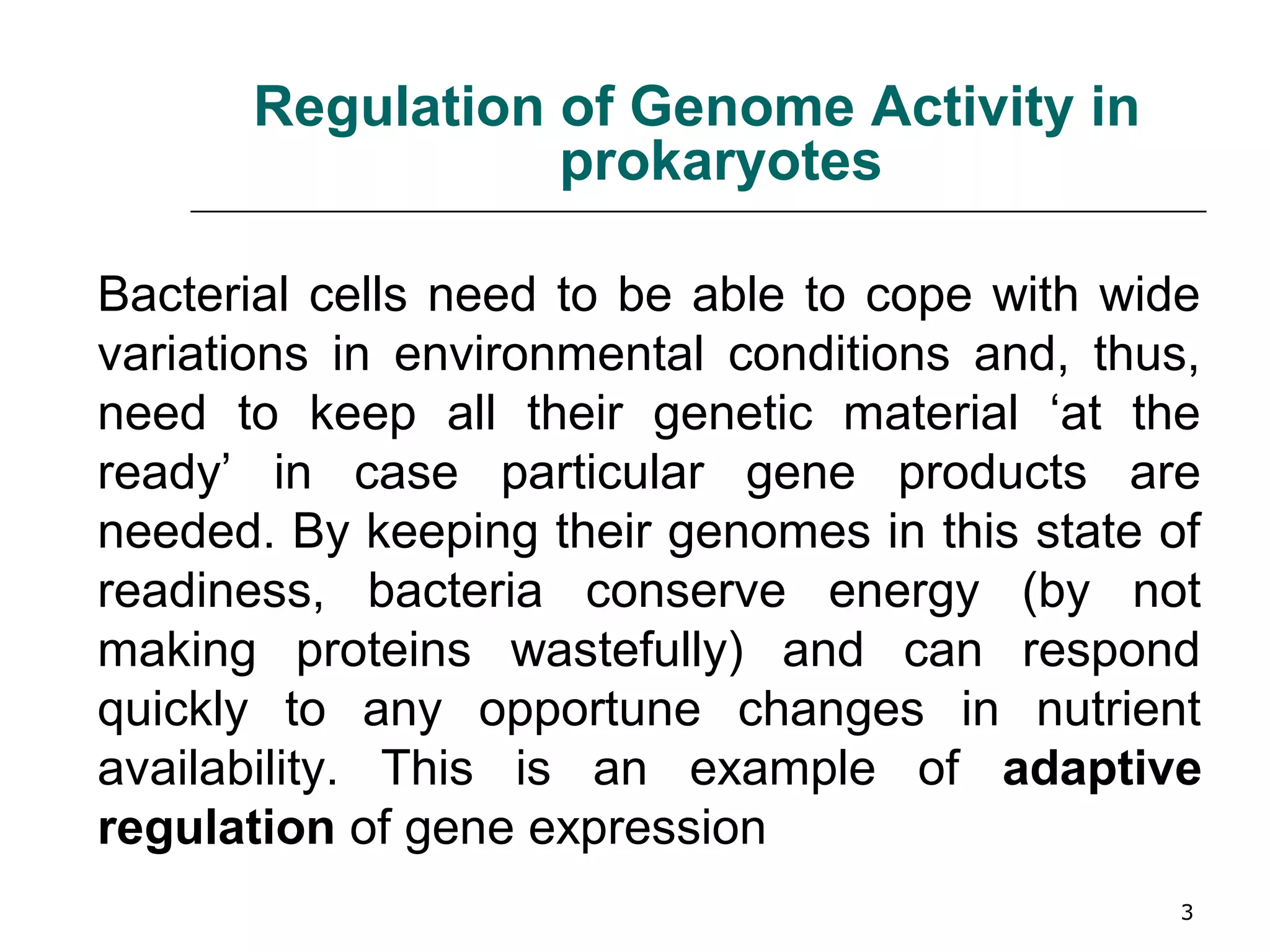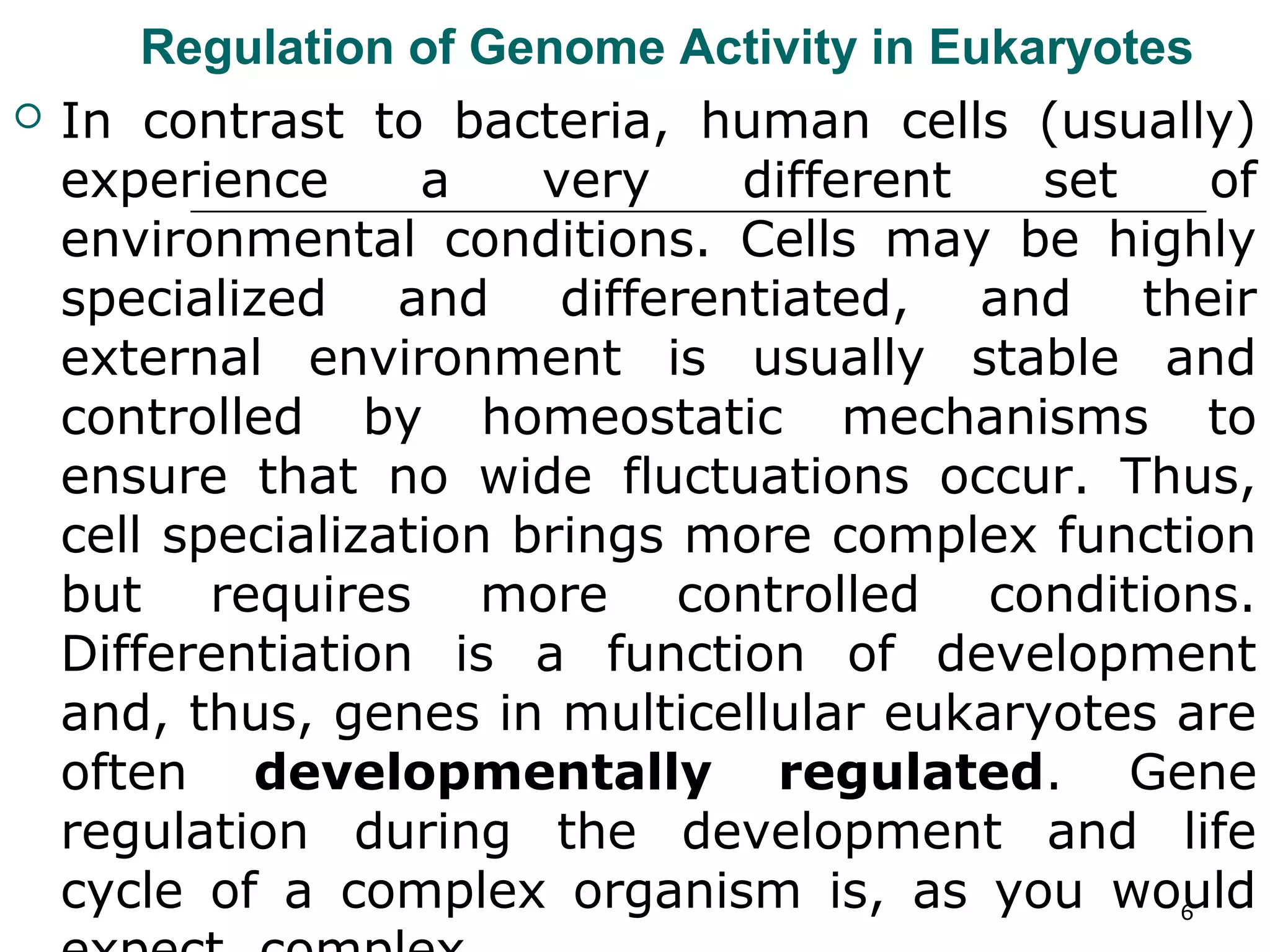This document discusses the regulation of genome activity in prokaryotes and eukaryotes. It explains that in prokaryotes like bacteria, gene expression is regulated through operons, which coordinate the expression of genes involved in specific pathways. A key example is the lac operon in E. coli. In eukaryotes, gene expression is more complex and regulated at many stages from chromatin structure to post-translational modification. Epigenetics also plays a role in regulating gene expression and cell differentiation through mechanisms like DNA methylation and histone modification.











